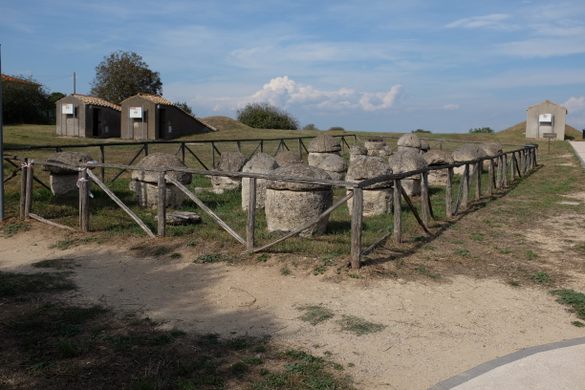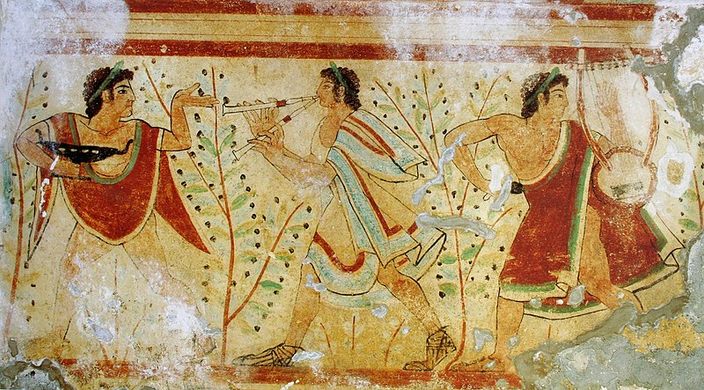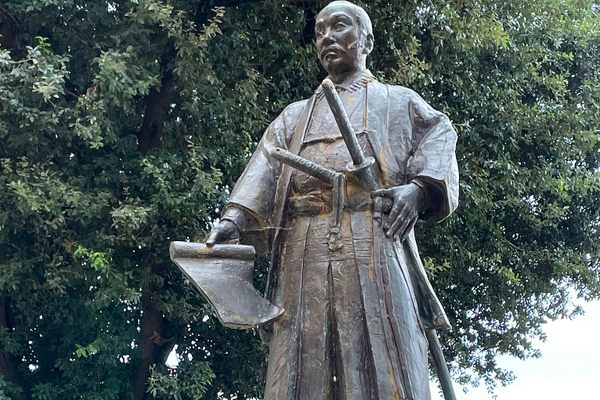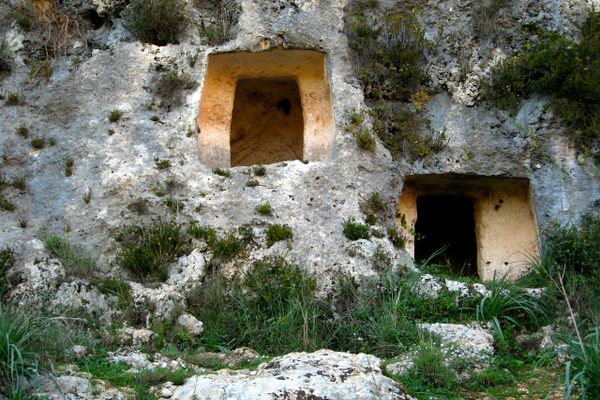AO Edited
Etruscan Necropolises of Tarquinia and Cerveteri
Wandering this ancient burial place offers a glimpse of the afterlife in the fresco-adorned tombs of an ancient Etruscan civilization.
A hill just outside the city of Tarquinia conceals a labyrinthine necropolis of the Ancient Etruscan civilization that lies beneath.
The mysterious Etruscan civilization ruled the region of Erturia, an area that comprises modern-day Tuscany, Umbria, Emilia-Romagna, Veneto, Lombardy, and Campania. The city of Tarquinia (known to the Etruscans as “Tarchuna”) was one of its most powerful centers from the early Iron Age, until the civilization was conquered and assimilated into the Roman Empire in 396 B.C.
The Etruscans of Tarquinia interred their dead in tombs dug into the rock of the hill and surmounted these with a structure constructed from rocks known as a “tumulus.” The vast necropolis that arose from the burial of generations of Etruscans is believed to hold approximately 6000 graves of which 200 of the tomb chambers are decorated with colorful frescoes.
The decorated tombs are believed by archeologists to have been the last resting places of the Etruscan elite who were laid to rest within the chambers in elaborately carved sarcophagi—which can be seen in the nearby museum—that depicted the likeness of the deceased and were ornately embellished with imagery of mythology.
The frescos largely depict themes and recreational activities that reveal the boundless zest for life and pleasure that the Ancient Etruscan nobility seemed to possess and hold as central to their notion of a life well-lived. Here may be seen scene after scene of music-making, dance, acrobatics and juggling, sexual encounters, feasting, drinking, hunting, and obscure rituals of magic.
However, there are also darker elements depicted within the paintings that reveal the fears and imagination of these ancient peoples. Several ferocious entities such as blue-skinned demons that shriek and gesticulate wildly and chimeric wild beasts like panthers and lions that prowl, hunt prey, and bare their fanged maws at visitors make appearances. These more nightmarish figures seem to have served as a sort of protective imagery that may have been believed to have guarded the slumber of the Etruscan dead.
In spite of continued archeological research, we may never know the intricacies and ontologies of the ancient Etruscan concept of life, death, and the afterlife, which were forever extinguished with their demise as a civilization. However, the vibrant murals that adorn the walls of their tombs at the necropolis of Tarquinia are a moving and haunting testament to the fact that the Etruscans were a people who appeared to love life in all its fullness and wished to continue their revelry into the hereafter.
When the novelist D.H. Lawrence visited Tarquinia in the 1920s, he wrote eloquently about the site and the feelings it inspired: “In the tombs we see it; throes of wonder and vivid feeling throbbing over death. Man moves naked and glowing through the universe. Then comes death: he dives into the sea, he departs into the underworld. … To the Etruscan, all was alive: the whole universe lived: and the business of man was himself to live amid it all. He had to draw life into himself, out of the wandering huge vitalities of the world.”


































Follow us on Twitter to get the latest on the world's hidden wonders.
Like us on Facebook to get the latest on the world's hidden wonders.
Follow us on Twitter Like us on Facebook